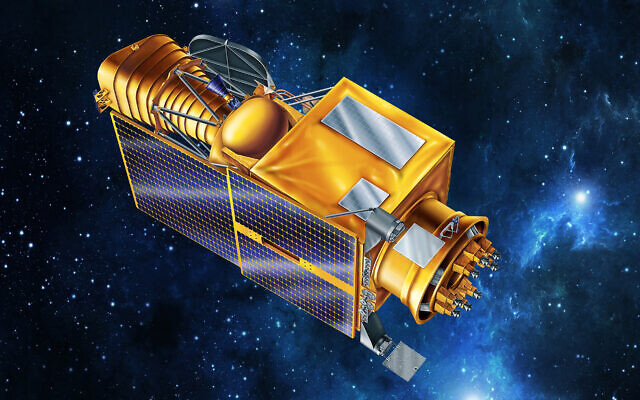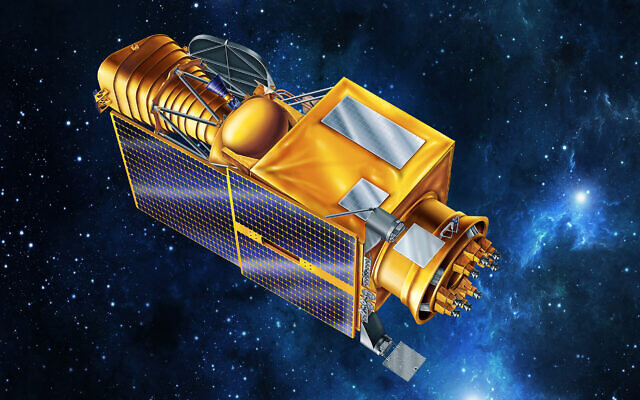
NASA will in 2026 launch Israel’s first space telescope into orbit, where it will scan the universe for events such as stars colliding or exploding, the Weizmann Institute of Science said in a statement Tuesday.
Ultraviolet Transient Astronomy Satellite, or ULTRASAT, will be carried into space on board a NASA launch rocket. The mission is a top project of the Israel Space Agency and the Weizmann Institute of Science and part of a newly signed partnership between the US space organization and Israel’s Ministry of Innovation, Science and Technology, which runs the ISA.
ULTRASAT is “expected to revolutionize scientists’ ability to detect and analyze transient events in the universe, such as neutron star mergers and supernova explosions,” the statement said. Its particularly wide field of view “represents a 100-fold leap in the extra-galactic volume accessible to scientists for the discovery of transient sources, compared to observatories on Earth.”
That will enhance research on astronomical objects such as supernovae, variable and flare stars, active galaxies, the source of gravitational waves, and accretion of stars by massive back holes, the statement added.
ULTRASAT will cost about $90 million in total to build.
Prof. Eli Waxman, an astrophysicist at the Weizmann Institute of Science and ULTRASAT’s head researcher, called it a “breakthrough project that places Israel at the forefront of global research.”
The telescope will also take measurements of ultraviolet light that cannot be taken from the Earth’s surface and provide real-time alerts on transient events in space, meaning those that take place over the relatively short time scale of up to just a few years, rather than billions of years.
Scientists hope to use ULTRASAT’s capabilities to learn more about the origin of heavy elements and the impact of giant black holes on their environment.
NASA will continue to partner with the project after the telescope is launched from the Kennedy Space Center. The telescope will be placed in a geostationary orbit that is matched to the Earth’s rotation, keeping it thousands of miles above the same spot on the planet’s surface.
“Groundbreaking science calls for cutting-edge technology,” said Uri Oron, director of the Israel Space Agency, and noted the telescope’s capabilities are at the “forefront of technological developments.”
The satellite will be built by the space division of the Israel Aerospace Industries, which will also oversee the mission after launch. The telescope itself is being constructed by Elbit Systems Electro-Optics.
Dr. Mark Clampin, director of NASA Headquarters Astrophysics Division, said “we are proud to join this partnership, an international effort that will help us better understand the mysteries of the hot, transient universe.”
Beyond scientific research, it is hoped the telescope will demonstrate the feasibility of low-cost affordable satellites, and “pave the way to Israel’s future space initiatives,” the statement said.



